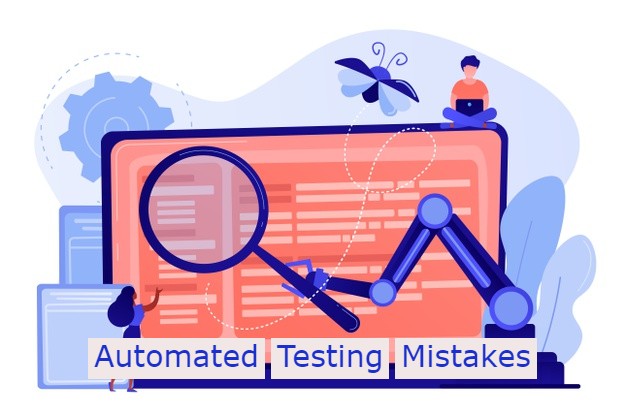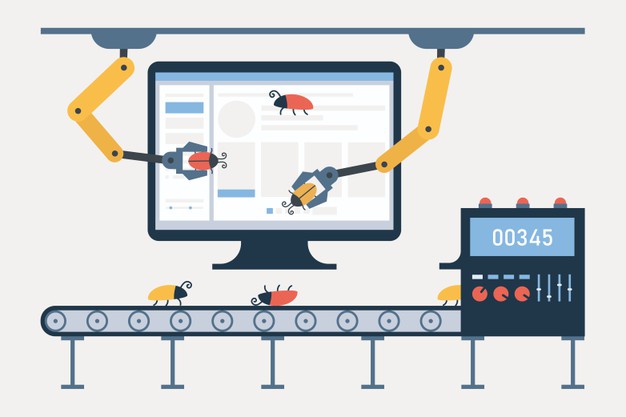Automated Testing: 7 Mistakes That Can Cost You Money

Gone are the days when manual testing used to be the last step in developing a product. However, with constant updates and improvements being a key reason behind any product’s success nowadays, automation testing has become an essential factor. Testing is crucial to guarantee that the end product is stable and fully working according to the desired needs. Hence automated testing should involve specific, accurate test cases and a good testing strategy.
Testing has a huge role to play in the effectiveness of the end product. Efficient testing will cover all the minus point and areas that usually go unnoticed. The whole process includes testing speed, latency, usability, and security. Hence these are the reasons why most companies immediately approve the thought of enhancing their test automation systems. However, a blind and hectic enhancement in automation testing increases the chances of serious errors. You must avoid it at any cost to not hamper a company’s progress, time, customer base, and money. Therefore, read this article to know about some automated testing mistakes that can cost you money.
1. Not Understanding the Purpose of Automation
The most widely used automation process starts with making a list of the things that are to be automated. The immediate next step followed by everyone is selecting tools that can execute the job. However, this is where one of the significant mistakes regarding automated testing gets done. Before starting everything else, the team needs to understand why they’re trying to achieve automation. All must realize the primary purpose of automation and the mitigation of the potential risks.
Your team needs to specify the objectives and expectations for every automation initiative carefully. The main focus should be contributing to quality at speed at every potential area of automation.
2. Automating the Wrong Things
A common mistake is pursuing automation for those things that are not good candidates. The primary miscalculation in this area is translating your present testing processes one-to-one into automation. This ultimately leads to wastage of time and effort on things that shouldn’t be automated or don’t need automation.
You should give the main focus in this area to something that will provide some real value. Many teams make a mistake by working for months to create a framework for automation but run a test once a year. It would be best if you avoided this to save time and effort. Moreover, sometimes managers set a high-level dashboard for showing the automation percentage. The teams, in this case, also become prone to useless automation for boosting this percentage.
Therefore, the ideal types of automated testing are those that can be deterministic and repeatable. If there are randomness involved or the codes keeps changing, the automation won’t be successful. Hence, to achieve favorable results with outstanding ROI, try to get repeatable tests. You can also try tests like performance testing that one can execute only through automated tools.
3. Selecting Tools incapable of providing a Solution
The error that many managers often make is choosing a single tool for the entire enterprise. However, this is never enough since there are different kinds of problems that you can solve through automation with other tools. The key here is to identify the problem that you want to solve with a device. Finding the right tools is vital for decreasing your workload. Otherwise, if you get the wrong tool, you need to get them customized to suit your purpose.
The solution for this issue lies in defining specific problems that need to be solved. After identifying them, you can go for a tool. However, it is also advisable to undergo a two-week proof-of-concept trial for every device. You can check their potential by running them through the complete development lifecycle to see its capability of addressing the problem you are trying to apprehend.

4. Selecting Tools not suitable for your Testers
During the testing process execution, a significant issue arises because of the people’s technical skills who will be using the tools. Therefore, you need to know your team’s skillsets to use your selected tools successfully. Vendors usually create specific tools for the personas that are likely to utilize them. There are three types of such tester personas:
Technical testers or test automation specialists- They mainly prefer high-level tools that can be used for modelling and don’t need coding capabilities.
Developer-testers- They prefer to stick to their preferred coding medium while doing test writing.
Business or non-technical tester- They conduct acceptance-testing, usability testing and others. They ideally prefer to use natural language while doing test writing.
Hence, when you buy tools for different testers, you are bound to get into difficulties. This also happens since organizations with a limited supply of developer-testers often ask testers of other personas for assistance. The solution for this problem lies in conducting trial runs for each of your tools. You should give these tools to the actual tester to uncover skill gaps. An ideal step is to search for tools that both coders and non-coders can access.
Another thing that must be present is a budget to upskill the team whenever the need arises. Hence the organizations must take decisive steps for retraining their workers and focus on creating specialized skills.
5. Failing to realize the total Budget of Tool Ownership
There are also instances where the managers fail to recognize the actual expenses and fall into deep troubles. Fixing a budget and strictly abiding by it isn’t easy in processes like automated testing. Therefore it is crucial to realize the actual expenses hiding behind the purchase of a tool.
You can tackle this issue by considering the associated costs before migrating from one tool to another. The key is to direct the focus on team training and support for a new tool. You should also take the cost of relocating in the existing tests and its impact into account.
6. Choosing a Tool simply because it is Open Source
Market preferences have started shifting in this sector of automated testing. As a result, open-source is now being widely accepted. However, while selecting a tool, this shouldn’t be the only criteria that you should follow. The trick here is to identify the issue you want to address and then look for a tool that can solve it.
Open-source tools need excellent technical skills and expertise. Moreover, despite their lack of license fees, they come with certain limitations. Some of these tools have limited features which will not let you the functionalities you need precisely.
The need for an open-source tool, therefore, is dependent on the work you want to execute. For small reporting, open-source tools are enough, but buying a commercial tool is better for more extensive reporting. Hence many enterprises use both commercial and open-source tools simultaneously.
You can comprehend the confusion regarding the usage of open-source tools by identifying the problem first. Then the next step is to find a suitable open-source or commercial tool that can give you solutions. You should also consider the skill levels of your team before opting for an open-source tool. Lastly, it is also essential to check any open-source tool’s community’s vitality to avail guaranteed free community support.
7. Unavailability of a suitable Testing Culture
Last but not least, the unavailability of a testing culture will affect the functioning of the tools. It is a common notion to blame the tools when the process goes wrong. However, in most cases, the team, their way of approaching testing, and their attitudes regarding automation contribute to the testing process’s problems.
The common issue with many companies regarding culture problems is their partiality against test automation. These companies generally have a single person designated as a tester. All the test activities go through this tester, thus creating confusion and performance degradation.
The testing culture requires a test automation champion who will look over the entire process. Therefore, the organizations involved in the automated sector should also focus on creating a suitable testing culture. They must encourage a person to take the initiative and create an environment to facilitate the testing processes.
You can easily create a good testing culture for your team through some basic but decisive steps. You should carefully evaluate the team and the organizational culture. The next step will be working alongside the leadership for promoting an enhanced and excellent testing culture. It is also vital to search for people capable of driving from inside the team and take them to the peak of success.
How to Improve the Efficiency of your Automated Testing Infrastructure with LambdaTest
Automated testing has been a blessing to the software development Industry. The developers were able to solve various issues in the testing process using this technology. For instance, automated tests help to remove all the redundant processes of the testing cycle. Thus, the developers save a lot of time and effort in the application development projects. Now, the developers need to wisely choose the platform to utilize this revolutionary technology’s full potential.
LambdaTest is a cloud-based platform to perform extensive automation testing on an online selenium grid. Using this platform, the developers can seamlessly test their application. LambdaTest helps the developers to test their app in a safe and secure Selenium Grid. Furthermore, they can use the test scripts to test the app on thousands of devices and operating systems. This platform also helps the developers to perform cross-browser testing. So, you can ensure that your application retains its smooth functionality irrespective of the browser or platform. In simple terms, LambdaTest ensures that the companies do not lose their audience base due to faulty software functionality execution. Thousands of companies all around the world use LambdaTest in their development projects.
LambdaTest provides various attractive plans to support the growth of small companies. LambdaTest offers attractive features like one-click bug-logging to detect errors in the framework. We can conclude that with this platform, the developers can develop, test and deliver high-quality web applications to their end-users.
Conclusion
These are the seven mistakes that can hamper our automated testing along with their solutions. If you have already tasted mixed results or mostly failures with test automation, that shouldn’t be keeping you from trying again. Automation has become a necessity for any organization nowadays. Hence lack of it means you will be lagging behind your competitors in the market.
The key to starting again is realizing the mistakes you have made in the past. These mistakes will thus prove to be the stepping stones for your journey towards success. Therefore, this is the ultimate way for you to lay the foundation for your venture’s practical test automation strategy.




